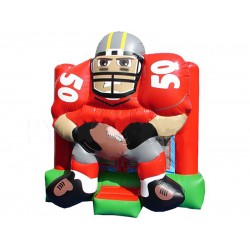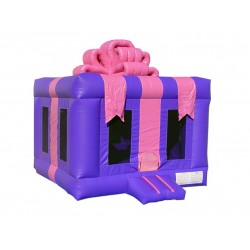How do I prevent a bouncy castle from tipping during installation?

Setting up a bouncy castle can provide endless fun for kids, but it’s essential to ensure that it is installed safely to prevent tipping or other accidents. Proper installation not only enhances safety but also extends the life of the inflatable. Here are some effective tips to help you prevent a bouncy castle from tipping during installation.
1. Choose the Right Location
Select a flat, level area for setting up the bouncy castle. Avoid slopes, uneven ground, or soft surfaces like sand or mulch, which can increase the risk of tipping. Ideally, the site should be free of obstacles such as tree branches, rocks, or sharp objects that could damage the inflatable or pose safety hazards.
2. Use Ground Anchors
Secure the bouncy castle using appropriate ground anchors or stakes. Most manufacturers provide specific anchoring equipment designed for their inflatables. Proper anchoring is crucial for stability, especially on windy days. Ensure that the anchors are driven deep into the ground to provide adequate support.
3. Check Wind Conditions
Before setting up the bouncy castle, check the weather forecast for wind conditions. It’s advisable to avoid installation during windy or stormy weather, as strong gusts can increase the risk of tipping. If it is windy, consider postponing the event or finding a sheltered location for the inflatable.
4. Inflate Slowly and Evenly
When inflating the bouncy castle, do so slowly and evenly. Start by inflating one section at a time, ensuring that it expands evenly. This will help maintain the castle’s balance as it fills with air. Avoid over-inflating, as this can also lead to instability.
5. Monitor Weight Distribution
Pay attention to the weight distribution of users inside the bouncy castle. Encourage children to spread out rather than cluster in one area, as this can help maintain balance and stability. Keep an eye on the total number of users to ensure you stay within the recommended weight limits.
6. Establish Safety Rules
Set clear safety rules for children using the bouncy castle. Instruct them to avoid rough play, flips, or jumping near the edges. Having an adult supervise the bouncy castle can help enforce these rules and maintain a safe environment for all users.
7. Regular Inspections
Before and after each use, inspect the bouncy castle for any signs of wear and tear, damage, or loose seams. Address any issues promptly to ensure the inflatable remains safe and stable during use. Regular maintenance can prevent unexpected tipping incidents.
Conclusion
In conclusion, preventing a bouncy castle from tipping during installation involves careful planning and attention to detail. By choosing the right location, using ground anchors, monitoring weather conditions, and establishing safety rules, you can create a safe and enjoyable environment for kids to play. Proper installation and maintenance are key to ensuring the bouncy castle remains stable and secure during its use.



